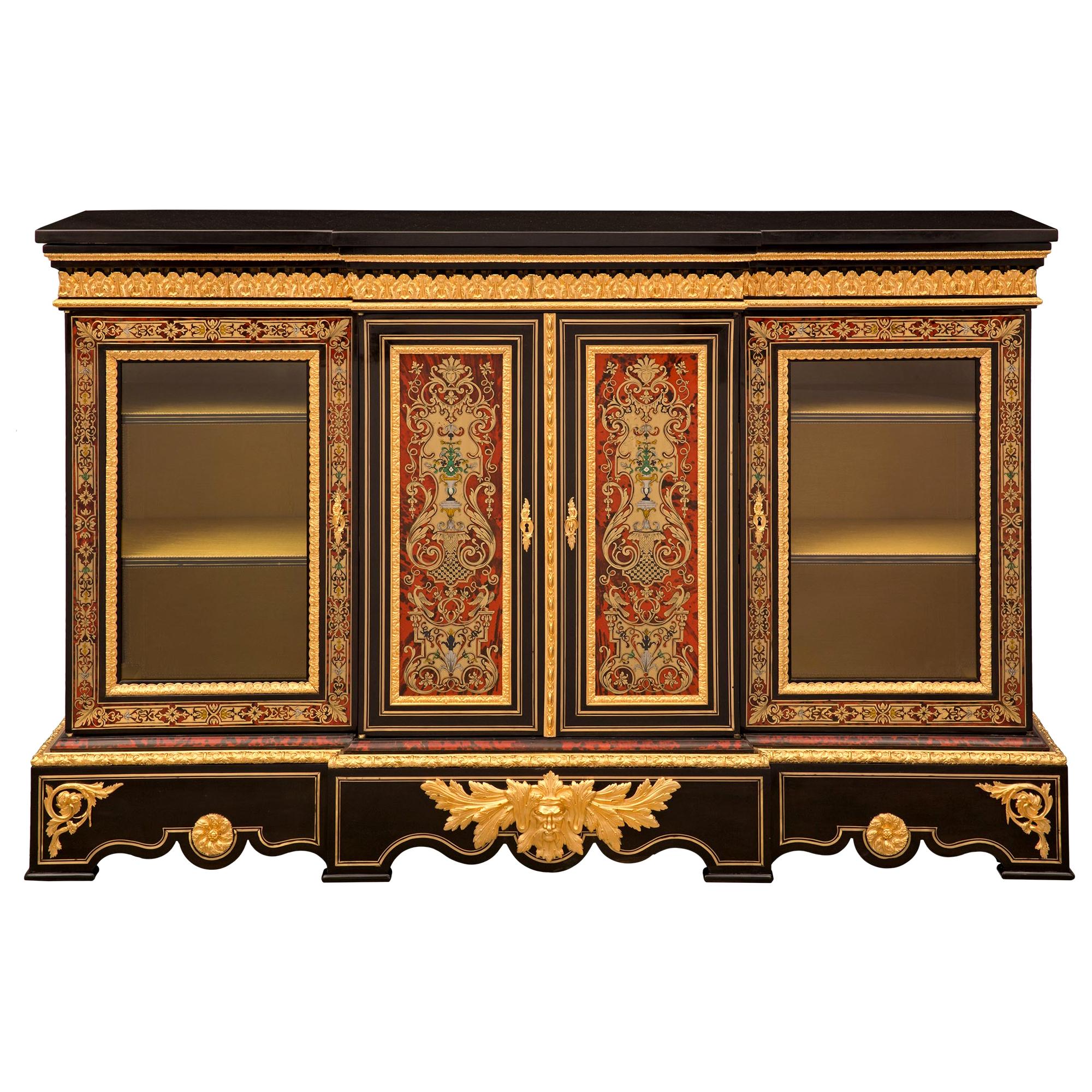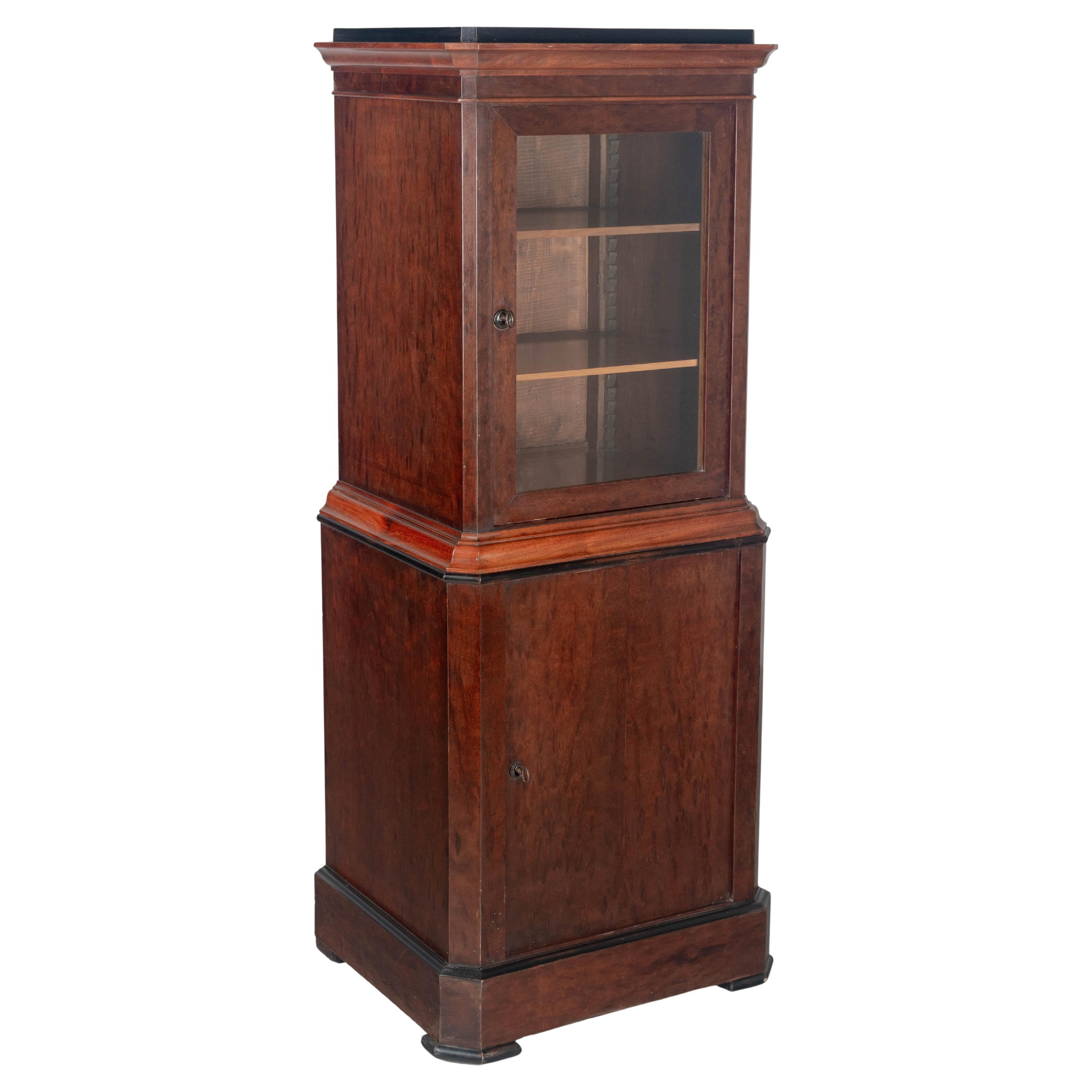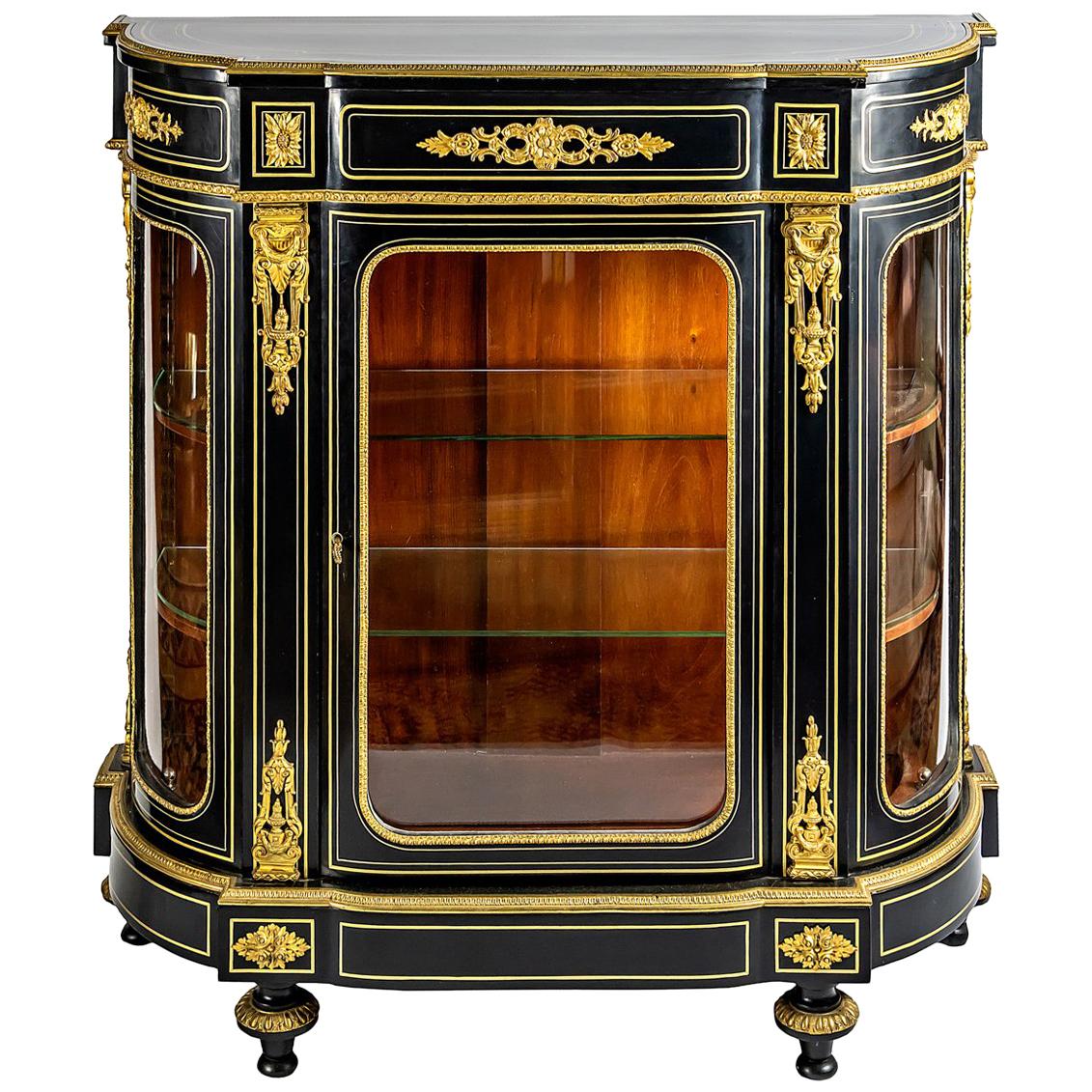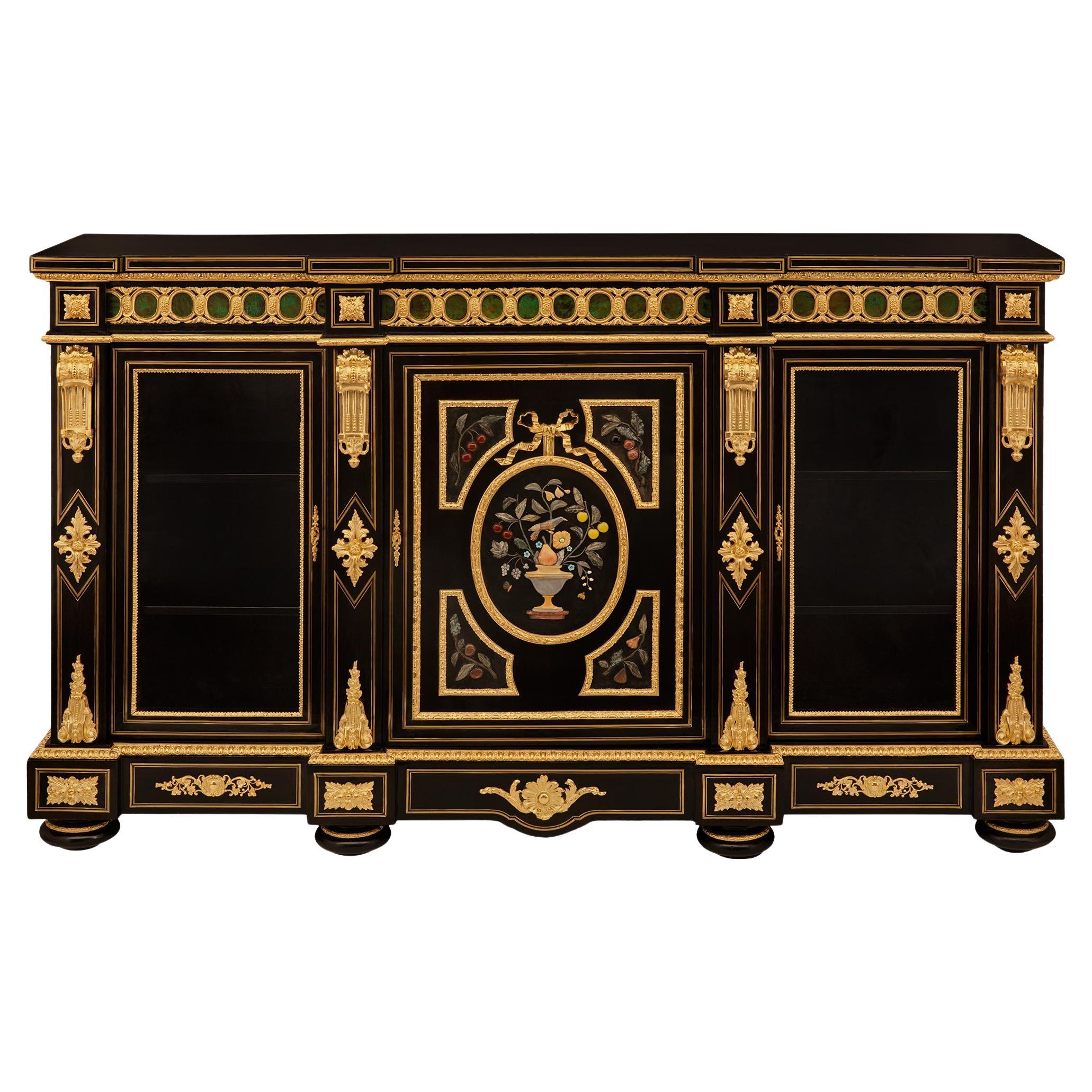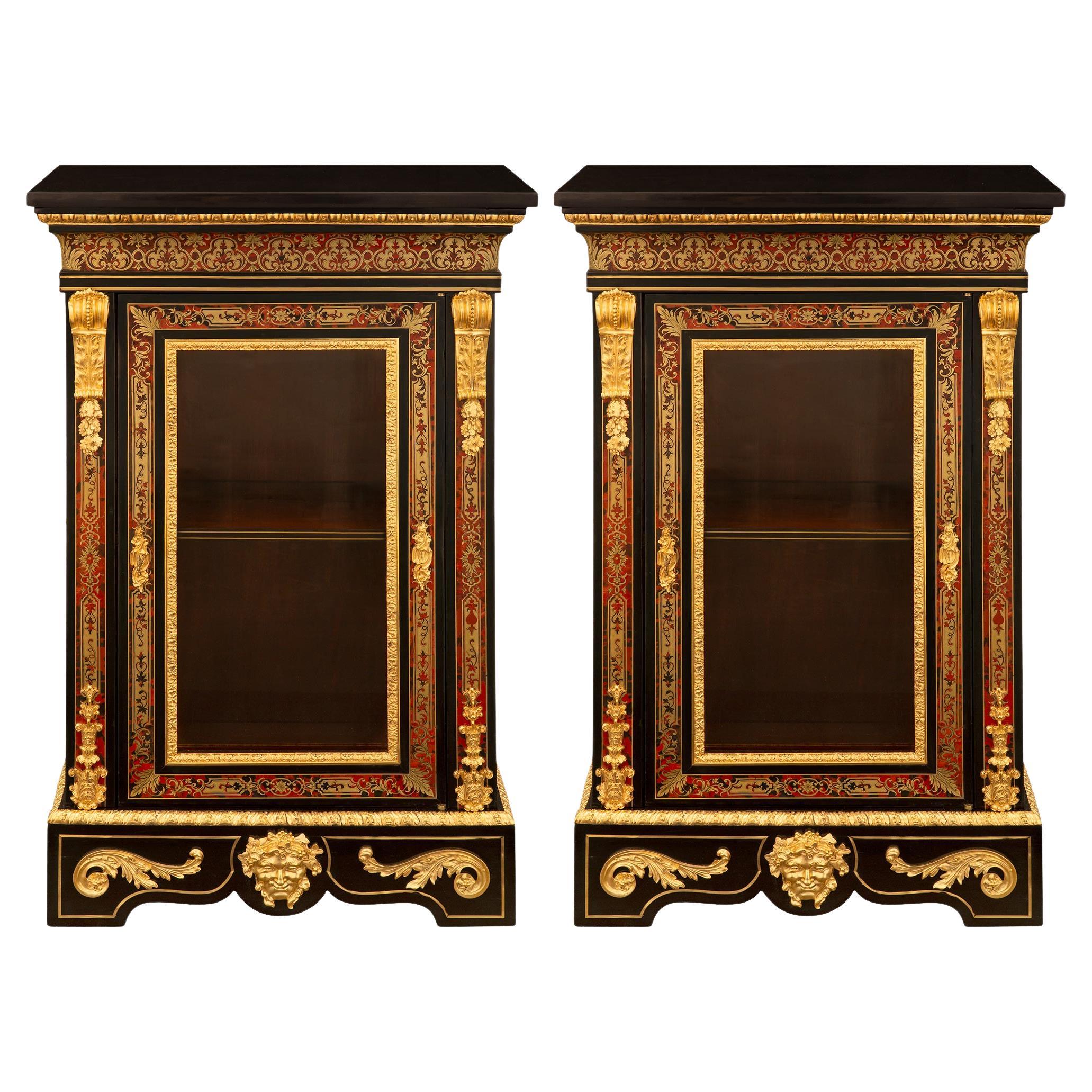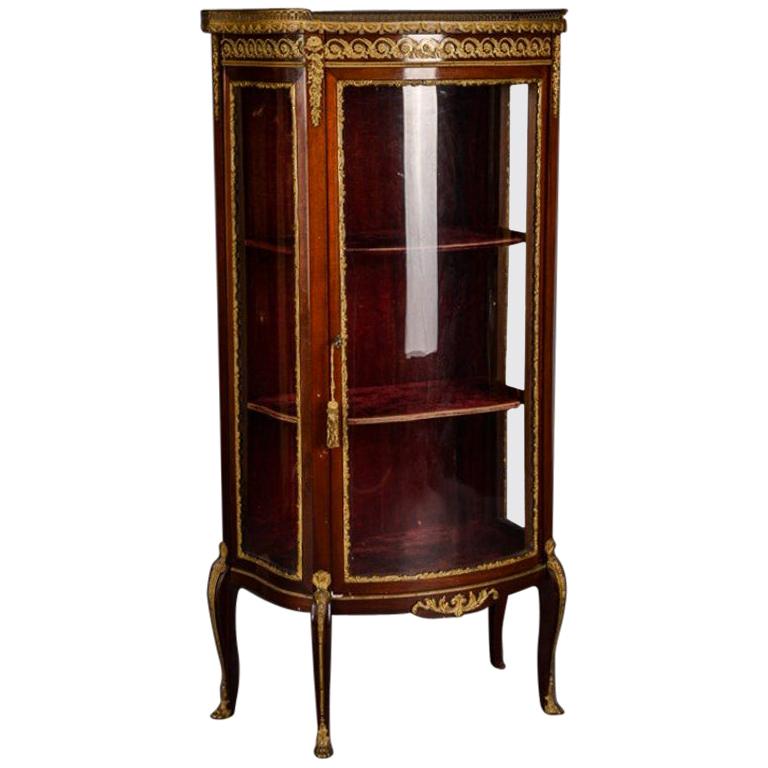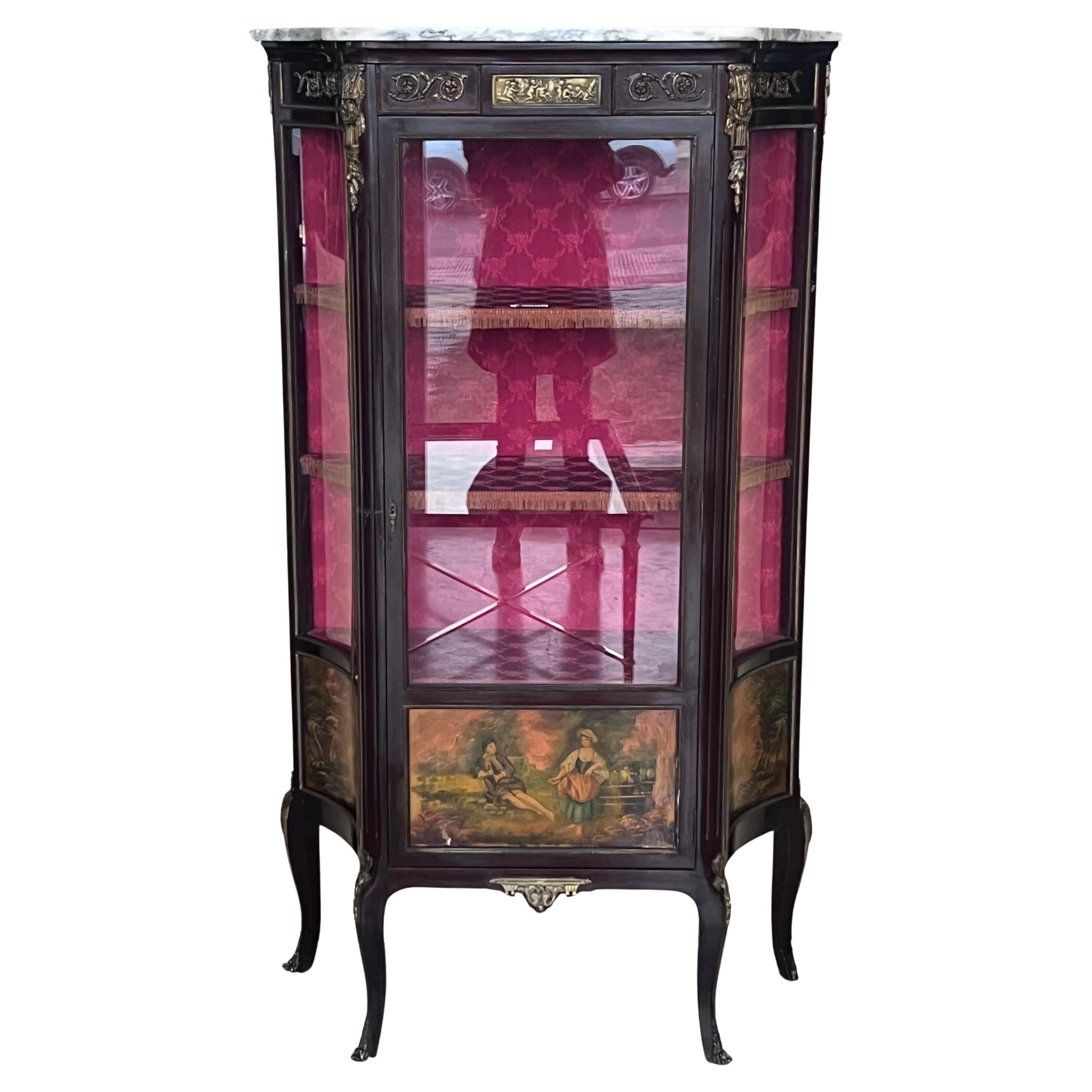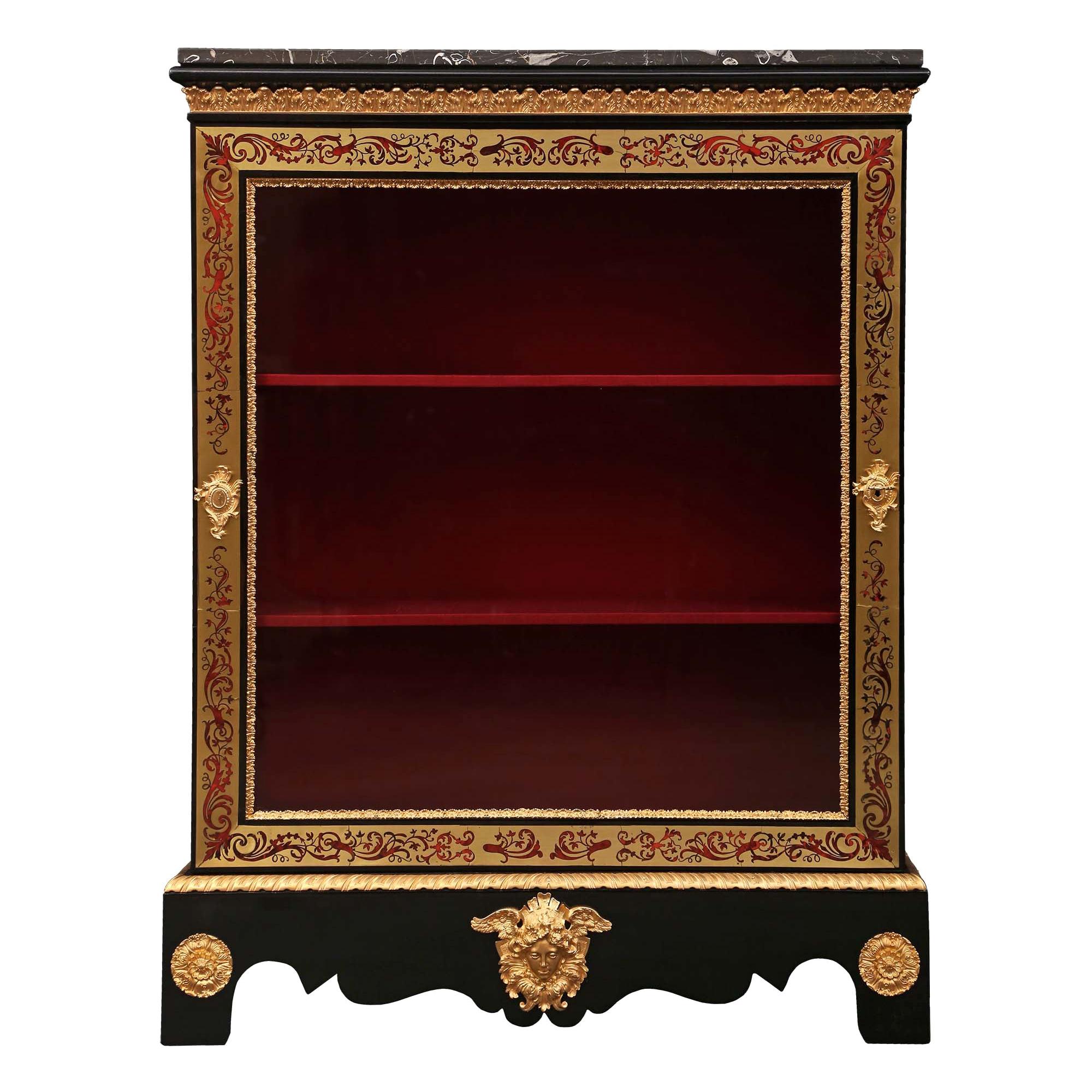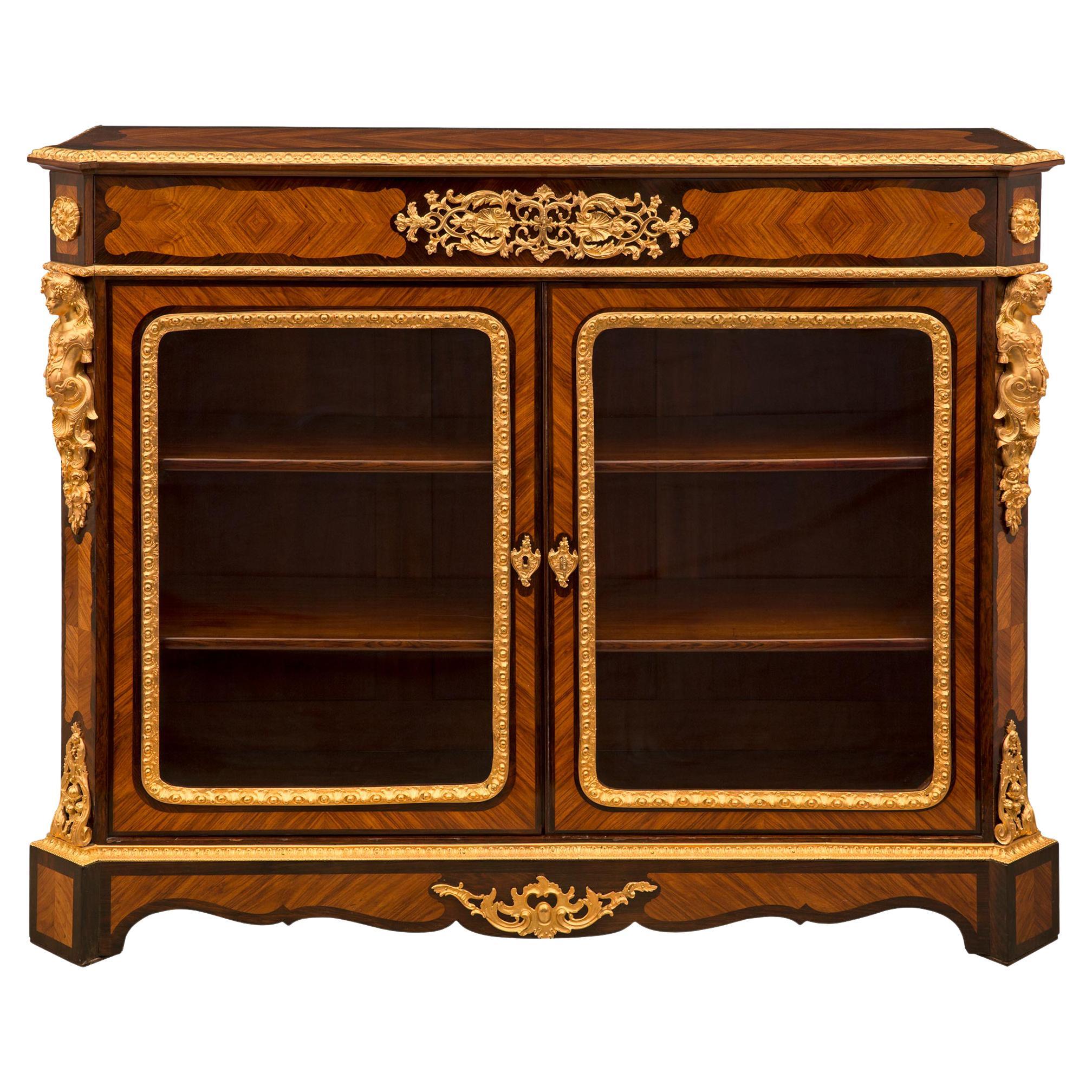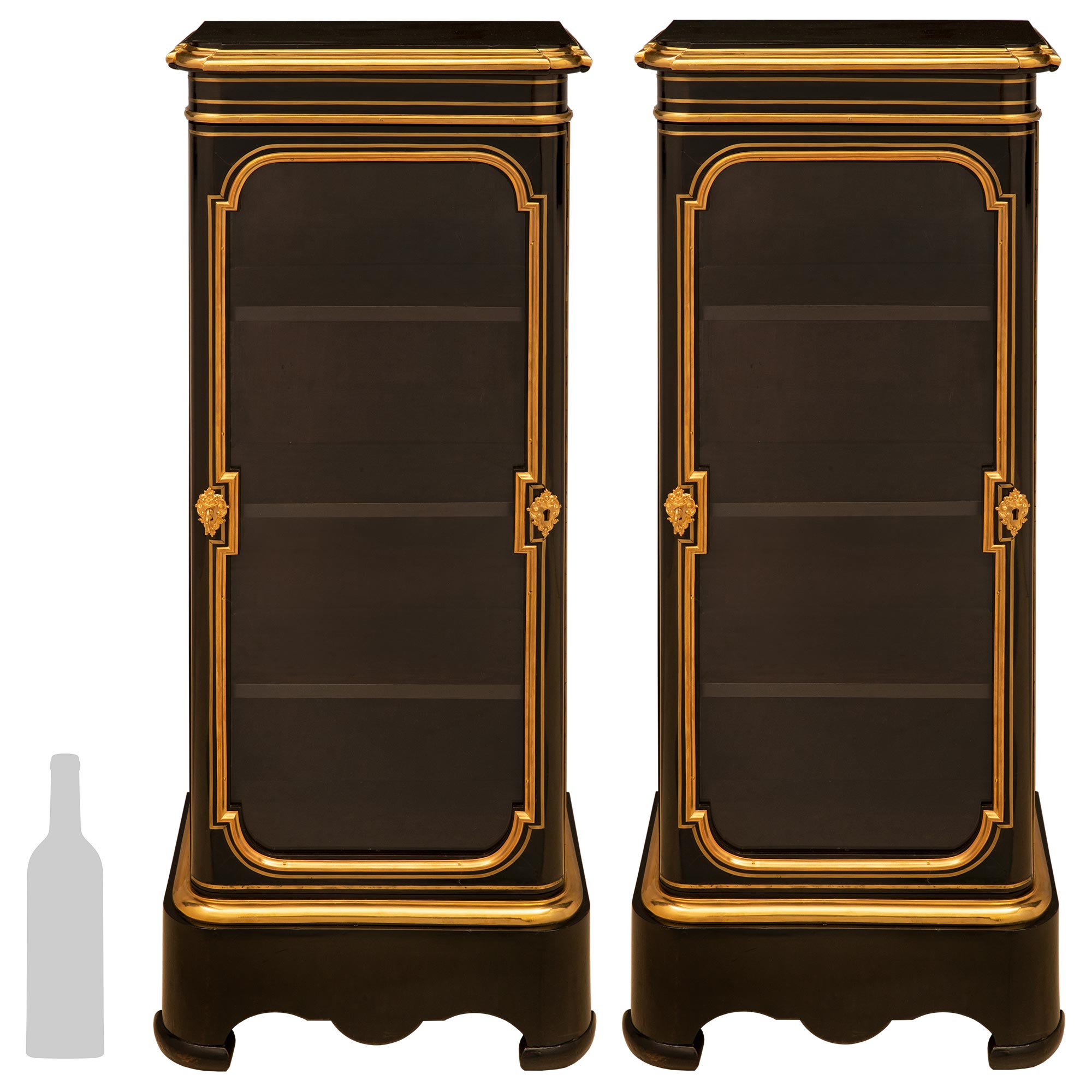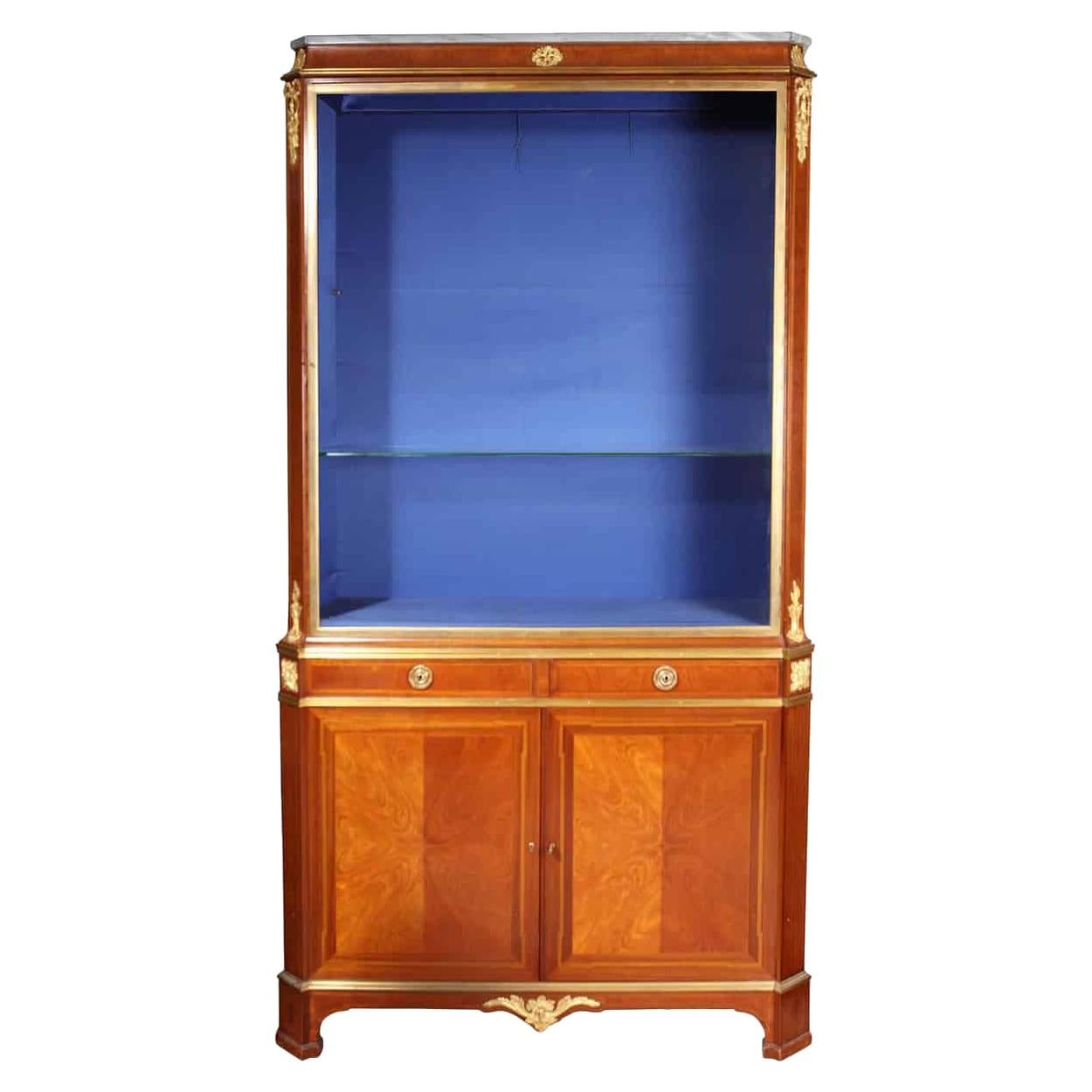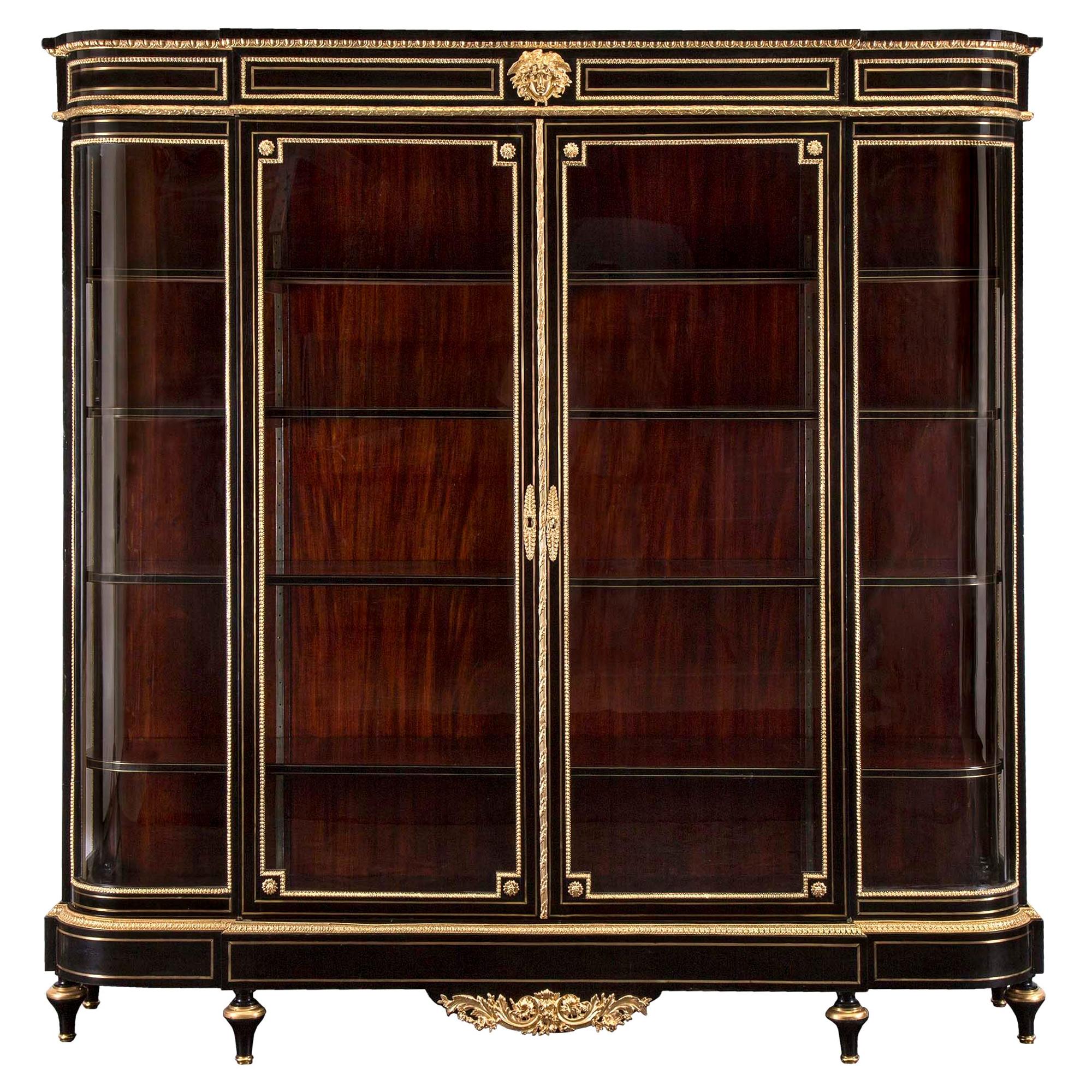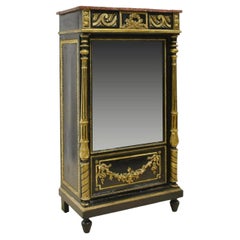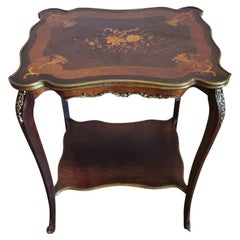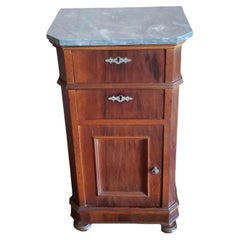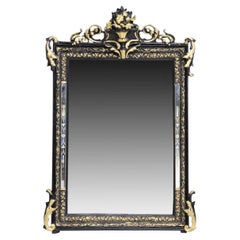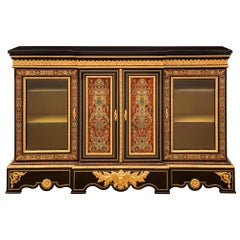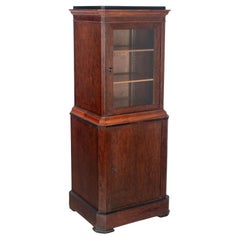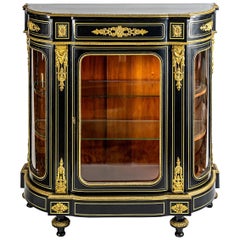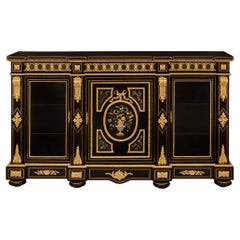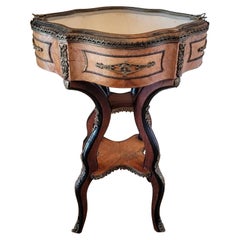
19th Century French Napoleon III Period Bijouterie Vitrine Table
View Similar Items
Want more images or videos?
Request additional images or videos from the seller
1 of 11
19th Century French Napoleon III Period Bijouterie Vitrine Table
$1,500List Price
About the Item
- Dimensions:Height: 34 in (86.36 cm)Width: 22.75 in (57.79 cm)Depth: 16.5 in (41.91 cm)
- Style:Napoleon III (Of the Period)
- Materials and Techniques:
- Place of Origin:
- Period:
- Date of Manufacture:circa 1850
- Condition:Wear consistent with age and use. Minor losses. Original antique character marks, including minor scuffs, scratches, chips, nicks, scattered losses, distressed finish. Patinated brass. Fabric interior deteriorating from age, delicate and pulling away from sides. Single fracture across glass panels.
- Seller Location:Forney, TX
- Reference Number:1stDibs: LU5977226279952
About the Seller
4.8
Platinum Seller
Premium sellers with a 4.7+ rating and 24-hour response times
Established in 2013
1stDibs seller since 2021
294 sales on 1stDibs
Authenticity Guarantee
In the unlikely event there’s an issue with an item’s authenticity, contact us within 1 year for a full refund. DetailsMoney-Back Guarantee
If your item is not as described, is damaged in transit, or does not arrive, contact us within 7 days for a full refund. Details24-Hour Cancellation
You have a 24-hour grace period in which to reconsider your purchase, with no questions asked.Vetted Professional Sellers
Our world-class sellers must adhere to strict standards for service and quality, maintaining the integrity of our listings.Price-Match Guarantee
If you find that a seller listed the same item for a lower price elsewhere, we’ll match it.Trusted Global Delivery
Our best-in-class carrier network provides specialized shipping options worldwide, including custom delivery.More From This Seller
View All19th Century French Napoleon III Period Mirrored Cabinet
Located in Forney, TX
A rare and magnificent antique Napoleon III period mirrored single door cabinet, Parisian work, finished in luxurious and grandiose Louis XIV style.
Hand-crafted in Paris in the t...
Category
Antique Mid-19th Century French Napoleon III Cabinets
Materials
Marble, Ormolu
19th Century French Belle Époque Period Marquetry Tiered Table
Located in Forney, TX
A beautiful French La Belle Époque period mahogany inlaid two-tier etagere stand / side table from the second half of the 19th century.
Handcrafted with exceptional craftsmanship, elegantly finished in the timeless and classic Louis XV taste, having a shaped top accented by gilt metal rim, breathtaking marquetry and matched inlay, over a scalloped apron embellished with finely detailed sculpted and chisled gilt bronze ormolu mounts, above the conforming shaped medial shelf, all graceful rising on excellent quality ormolu mounted cabriole legs, terminating in gilded bronze sabots.
A great presence and good proportions, make this versatile piece the ideal size for use as a accent table, occasional table, whatnots etagere...
Category
Antique Late 19th Century European Belle Époque Side Tables
Materials
Bronze, Ormolu
19th Century French Louis Philippe Period Bedside Cabinet
Located in Forney, TX
A period Louis Philippe walnut bedside cabinet from France. Handcrafted and carved in the early/mid 19th century, during the transition from late French Restoration through Louis Phi...
Category
Antique Early 19th Century French Louis Philippe Cabinets
Materials
Marble
19th Century French Napoleon III Period Wall Mirror - Signed JB Paris
Located in Forney, TX
A stunning period Napoleon III (1852-1870) French hand carved, painted and gilded wall mirror by JB Paris. circa 1850s/early 1860s
Born in France in the mid-19th century, exquisitely hand-crafted high-quality Parisian work, using elements from timeless and luxurious historical Louis XV Rocaille style, in typical Napoleon III Second Empire fashion ornamentation and decoration are the focal points.
Exceptionally executed, this remarkable antique mirror features a blackened (black lacquered) wood frame with an abundance of exuberant curving shapes, dimensional openwork, leafy acanthus scroll flourish elements, and visually striking profusion of brilliant gold gilded decorative motifs.
Surmounted by an ornate sculptural cascading urn scrolling crest bouquet pediment, over ebonized frame embellished with contrasting giltwood fruit, flowers and leaf carvings, bordered by stylized foliage relief running ornamentation, encasing large rectangular flat mirror plate, flanked by a pair of elongated beveled glass side panels embellished with artistic etched glass accents. Signed, the boarded back stamped black "JB Paris" within a circle.
Dimensions; (approx)
47.25" High, 32" Wide,
41.5lbs
Louis Napoleon Bonaparte
(1808-1873) was Emperor of France from 1852 to 1870 under the name of Napoleon III. In a way, the artistic codes of the Napoleon III style — also called Second Empire style — were presented at the Exhibition of 1844, during the reign of Louis-Philippe d'Orléans. He was an important influence on architecture, interior furnishings and decoration throughout the rest of Europe and North America.
The Napoleon III style (also known as Second Empire) stands as one of the most unique styles ever produced. The eclecticism of the Second Empire is reflected in the association of past tradition with the development of modernism. It was often referred to as a “style without style”. The Napoleon III ”style” was in fact more of a combination of different styles from past centuries adapted to the modern era in order to correspond to a time of dynamic, innovative transformation. It stands out because there is nothing within it that is unique to itself. Everything, including materials, forms reproduced, and ornamentation used, was borrowed from styles that preceded it. Instead of drawing their inspiration from a single period, the artists and decorators from the Second Empire drew indiscriminately, with joyful exuberance, from all sources. Even so, this style, which is so apparently lacking originality, carries on a recognizable personality and is easily identified.
Provenance / Acquisition:
Acquired from highly reputable antiques auction...
Category
Antique Mid-19th Century French Napoleon III Wall Mirrors
Materials
Glass, Mirror, Wood, Giltwood
19th Century French Napoleon III Period Upholstered Dining Chairs, Set of 4
Located in Forney, TX
A rare set of four period Napoleon III Second Empire dining chairs, hand-crafted of solid fruitwood in France in the third quarter of the 19th century.
Finished in luxurious Pari...
Category
Antique 19th Century French Napoleon III Dining Room Chairs
Materials
Upholstery, Fruitwood
19th C. French Charles X Restoration Period Sewing Stand Work Table
Located in Forney, TX
A scarce period Charles X (1818-1834) French Restoration mahogany travailleuse sewing (thread stand - side table - jewelry dressing table) with light, warm, beautifully aged patina.
Born in France in the early 19th century, almost certainly Parisian work, exquisitely hand-crafted, this exceptionally executed example features ornate gilt bronze ormolu mounts, escutcheons, and elaborate gilt metal trim. Having a highly figured light mahogany hinged lid top, lifting open to reveal a striking finished interior with divided compartments and original inset mirror plate. The conforming rectangular case fitted with a faux drawer front over a dovetailed drawer with sectioned interior. Elegantly rising on oval-shaped medial shelf stretcher-joined curvacious legs.
Dimensions (approx):
27" High, 20" Wide, 13.5" Deep
Stunning light almost blonde antique mahogany coloring and mellow warm tone, superb wood grain detail, and charming, beautifully aged patina over the whole. Great shape overall. Retaining original antique character marks, wear consistent with age and indicative of minimal use, nothing that detracts from the aesthetics or functionality, but only adds to the overall authenticity, refined elegant warmth, luxurious sophistication, and cozy unpretentious rustic elegance.
Delivered cleaned, hand waxed, polished French patina finish, ready for immediate use and generational enjoyment!
What is Charles X style:
The comte d’Artois – or Charles X - was the son of the dauphin Louis-Ferdinand de Franc and Marie-Josèphe de Saxe. He succeeded his two brothers Louis XVI and Louis XVIII and became the King of France in 1824. Thirty years after the French Revolution, he wanted to embody the return of monarchy and became the leader of the catholic party . As the previous kings, he was crowned in 1825 but he was soon overthrown by the revolution in July, 1830, called "Trois Glorieuses". He left then for England, Scotland, Prague and Istria where he died in 1836.
Charles X style lasted from 1818 to 1834 and happened during the Bourbon Restoration (French Restoration). This style did not replace totally the style of furniture from the French Empire but it was different from the formalism in the Napoleonic era, during which strictness and simplicity were inspired by Greco-Roman art. Indeed, artistic fields flourished. In terms of furniture, this renewal was suggested by the softening of shapes. Even though the simple aspect from the French Empire was still visible, shapes became curvier with volutes and arabesques. Another distinction is the loss of the massive aspect of furniture and the decrease of dimensions in order to decorate smaller appartments. Handling ability and comfort were key-words in the making of furniture. Apartments had essential elements such as chests of drawers, big rounded tables in the dining room, desks or secretaries, armoires and even dressing tables, comfortable fainting couches in the living room, small tables, pedestal tables, as well as gondola chairs. The wavy aspect of the latters certainly represent Charles X style the best.
One of the most emblematic features of this style is the use of bois clairs – light woods in warm blond tones - and indigenous woods that are varnished in order to highlight the grains. Bird's-eye maple, ash trees, plane trees, yew trees, beech trees, olive trees and cedar trees were most likely to be used. Indeed, at the beginning of the 19th century dark woods were hard to find. In 1806, the Napoleon’s Continental System was established in order to ruin the United Kingdom by preventing the country from any business with the rest of Europe. Therefore craftsmen had to find alternatives from mahogany which was the most commonly used material at this time. After 1815, the import of wood was even more difficult because of peace treaties and the European political situation, which contributed to the popularity of the bois clairs and indigenous woods. The furniture was often decorated with fine inlays made out of dark wood representing foliage, which contrasted with the veneer. Even though these patterns can look like bronze decorations from the Empire era, they were far more simple and did not represent any military or mythological attributes. On the tables, trays were sometimes made out of marble as in the French Empire, but it was often put aside and inlaid veneer, Verre Eglomisé – a type of glass with a mirror finish –, mirror or porcelain from Sèvres or Paris were more likely to be used.
Decorative elements from the Monarchy were highly appreciated again as they suggested luxury. Indeed, marquetry work was particularly fashionable - Boulle marquetry thrived around 1820 as the works of the Levasseur family can show. In the same way, draperies and trimmings referred to the monarchist splendour. Fabrics were often white – the traditional colour of the Bourbons – or light coloured as oppposed to the typical green from the Napoleonic era.
One of the most symbolic figures from this period of time might be Jean-Jacques Werner (1791-1849), a cabinetmaker who worked for prestigious clients such as the Duchesse de Berry who was Charles’s step-daughter. His works can be seen at the Musée des Arts Décoratifs and at the Grand Trianon in the Palace of Versailles. The duchess’s appartments situated at the pavillon de Marsan and at the Palais de Saint Cloud illustrate Charles X style the best with furniture made out of bois clairs and ornamented with dark wood patterns or fine gold decorations.
Chales X style allows a transition between the sobriety of the Empire style and the abundant aspect of Louis-Philippe style. The gothic style started at this time through the "style à la cathédrale", inspired by religious architecture, which thrived from 1827 to 1830. Indeed, at the beginning of the 19th century, Romanticism put the spotlight on the Middle Ages. Cabinetmakers were not inspired by the medieval furniture but rather by architectural elements of churches and cathedrals. For instance the backs of chairs were decorated with arches shaped like rib and serration. In the same way, before Charles X abdicated, pieces of furniture were made out of dark woods – such as mahogany, which was used again in France – and were inlaid with light wood. Romanticism also influenced the layout of furniture in appartments to suggest movement through a mix of various styles, various shapes and various sizes, as opposed to the static aspect of Neoclassicism. The start of industrialisation and mechanisation also influenced this style as early technical developments led to the production of pieces of furniture in series.
Credit:
Marc Maison
Bibliography:
FANIEL Stéphane (Dir.), Le Dix-neuvième Siècle Français, Collection Connaissance des Arts, 1957, Hachette
SASSONE, Adriana Boidi, Furniture from Rococo to Art Deco, 2000, Evergreen
--
Extremely versatile:
As warm and attractive as it is useful, this remarkable antique table having the ideal size and small proportions for a variety of different uses, including as a side table, accent or occasional table, tall sofa...
Category
Antique Early 19th Century French Charles X End Tables
Materials
Bronze, Ormolu
You May Also Like
French 19th Century Napoleon III Period Vitrine Cabinet, Signed Pretot
By Hippolyte-Edme Pretot
Located in West Palm Beach, FL
A stunning and most unique French 19th century Napoleon III Period ebony, ormolu, tortoiseshell, brass, pewter, Lapis Lazuli, mother of pearl, and black Belgian marble vitrine cabinet, signed Pretot. The four door buffet is raised by a beautiful scalloped shaped base with most elegant scrolled movements. The base is adorned with striking richly chased ormolu mounts of lovely rosettes, foliate Rinceaux designs, and a most impressive central mask of a bearded man amidst large acanthus leaves, all set on an ebony background with fine brass fillets. The two central doors are decorated with stunning masterfully executed scrolled foliate brass designs with intricately detailed maiden's faces, birds, and central pewter and colorful pietra dura urns above an exceptional lattice design with a Lapis Lazuli background and a bottom mother of pearl palmette all set on a superb tortoiseshell background. Each outer door retains its original glass pane set within a foliate ormolu band and a sensational inlaid frame with additional brass designs of interlocking geometric patterns, lovely scrolled foliate movements, finely detailed palmettes at each corner, and striking most charming pietra dura inlaid floral reserves. All four doors display foliate ormolu keyhole escutcheons and open to reveal two adjustable upholstered shelves...
Category
Antique 19th Century French Napoleon III Vitrines
Materials
Lapis Lazuli, Belgian Black Marble, Brass, Ormolu, Pewter
19th Century Napoleon III French Mahogany Vitrine
Located in Winter Park, FL
A 19th Century French Napoleon III vitrine, or display cabinet, made of solid and veneers of mahogany. Original blown glass paned door with...
Category
Antique 19th Century French Napoleon III Vitrines
Materials
Glass, Mahogany
French 19th Century Napoleon III Vitrine Cabinet
Located in Vilnius, LT
French antique Napoleon III vitrine cabinet is after renovation. Wood is decorated with inlaid brass and bronze details. Inside there are two glass shelves. Side parts are with perfe...
Category
Antique 19th Century French Napoleon III Vitrines
Materials
Bronze, Brass
French 19th century Napoleon III Period Ebony, Ormolu and Hardstone vitrine
Located in West Palm Beach, FL
A spectacular French 19th century Napoleon III Period Ebony, Ormolu and Hardstone cabinet vitrine. This impressive cabinet with Boulle inlays is raised on six bun feet with Ormolu ba...
Category
Antique 19th Century French Napoleon III Vitrines
Materials
Stone, Ormolu
Pair of French 19th Century Napoleon III Period Boulle Cabinet Vitrines
Located in West Palm Beach, FL
A striking and most impressive pair of French 19th century Napoleon III period Ebony, Tortoiseshell, brass, ormolu, and black Belgian marble Boulle cabinet vitrines. Each vitrine is ...
Category
Antique 19th Century French Napoleon III Vitrines
Materials
Marble, Brass, Ormolu
19th Century Napoleon III Style Vitrine
Located in Berlin, DE
Delicate French vitrine in transition or Napoleon III style, circa 1870.
solid wood. High-rise, one-door, cambered and three-sided glazed body. On curly feet scalloped out.
Three-...
Category
Antique 19th Century German Napoleon III Vitrines
Materials
Bronze
